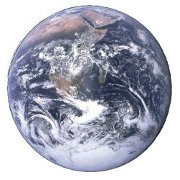
Custom Search
Animals in Navassa Island
Navassa island, an unincorporated territory of the US, is a small, uninhabited island in the Caribbean sea, between Cuba, Haiti and Jamaica. Although unpopulated by people, it is populated by reptiles, insects, arthropods and fish.
Navassa Island Reptiles
Reptiles unique to the island include the Navassa anole, Cochran's croaking gecko, the Navassa dwarf gecko and the Navassa galliwasp. The Navassa Curly-tailed Lizard, now unfortunately extinct, was also unique to Navassa Island. There are two other extinct endemic reptiles sometimes considered full species; the Navassa Iguana and the Navassa Dwarf Boa.
galliwasp. The Navassa Curly-tailed Lizard, now unfortunately extinct, was also unique to Navassa Island. There are two other extinct endemic reptiles sometimes considered full species; the Navassa Iguana and the Navassa Dwarf Boa.
Navassa Island Invertebrates
Survey collections of invertebrates on Navassa island recorded and documented 650 species, which featured a stunning 500 new insects, with a possible 30 percent being endemic to the island. Nearly 100 arthropods, which are mostly spiders, made up the rest of the discovered and listed species. Of these 100 arthropods, there were cataloged 40 new species of spider.
Invertebrates which have been found exclusively on Navassa Island include a may beetle phyllophaga navassa, a longhorned beetle, plectromerus navassae, a millipede macroxenodes navassaensis, a wall crab spider selenops trifidus, a shorttailed whipscorpion rowlandius steineri, a tanaid crustacean Saltipedis navassensis, and an isopod crustacean, Stenetrium kensleyi.
Navassa Island Fish
Marine fish discovered only at Navassa Island include the Flagfin
Flagfin  stargazer Gillellus inescatus, a goby Evermannichthys bicolor and the Whitesaddle
stargazer Gillellus inescatus, a goby Evermannichthys bicolor and the Whitesaddle  Blenny Starksia leucovitta. A third fish discovered at Navassa Island is the ribbon blenny
Blenny Starksia leucovitta. A third fish discovered at Navassa Island is the ribbon blenny  emblemaria vitta, whose name is based on the Latin noun vitta, meaning "band" referring to the ribbon-like shape of the orbital cirri, which also gives it its common name. Another blenny discovered at Navassa Island is Acanthemblemaria harpeza. Its name derives from the Greek noun harpeza meaning thorn-hedge, which refers to the branched nasal and orbital cirri that are bush-like with thorn spines on the head, and thus given the common name, thornbush blenny.'
emblemaria vitta, whose name is based on the Latin noun vitta, meaning "band" referring to the ribbon-like shape of the orbital cirri, which also gives it its common name. Another blenny discovered at Navassa Island is Acanthemblemaria harpeza. Its name derives from the Greek noun harpeza meaning thorn-hedge, which refers to the branched nasal and orbital cirri that are bush-like with thorn spines on the head, and thus given the common name, thornbush blenny.'
Navassa National Wildlife Refuge
The US Geological Survey had two science expeditions to Navassa Island in 1998 and 1999, organized by the Center for Marine Conservation. These expeditions conducted an inventory of the natural resources. Because of the wealth of flora and fauna collected during these expeditions, Navassa Island was declared a National Wildlife Refuge in 1999.
Navassa Island Reptiles
Reptiles unique to the island include the Navassa anole, Cochran's croaking gecko, the Navassa dwarf gecko and the Navassa

Navassa Island Invertebrates
Survey collections of invertebrates on Navassa island recorded and documented 650 species, which featured a stunning 500 new insects, with a possible 30 percent being endemic to the island. Nearly 100 arthropods, which are mostly spiders, made up the rest of the discovered and listed species. Of these 100 arthropods, there were cataloged 40 new species of spider.
Invertebrates which have been found exclusively on Navassa Island include a may beetle phyllophaga navassa, a longhorned beetle, plectromerus navassae, a millipede macroxenodes navassaensis, a wall crab spider selenops trifidus, a shorttailed whipscorpion rowlandius steineri, a tanaid crustacean Saltipedis navassensis, and an isopod crustacean, Stenetrium kensleyi.
Navassa Island Fish
Marine fish discovered only at Navassa Island include the




Navassa National Wildlife Refuge
The US Geological Survey had two science expeditions to Navassa Island in 1998 and 1999, organized by the Center for Marine Conservation. These expeditions conducted an inventory of the natural resources. Because of the wealth of flora and fauna collected during these expeditions, Navassa Island was declared a National Wildlife Refuge in 1999.
 Information about the animals living in Navassa Island is brought to you by "List of countries of the world", your first stop in discovering all countries and animals of the world.
Information about the animals living in Navassa Island is brought to you by "List of countries of the world", your first stop in discovering all countries and animals of the world.The animals displayed on this page are grouped in their scientific order. View also countries of the world ordered by:
- List of TLD's
- Country dialling codes
- Population
- Kilometers of coastline
- Square kilometers of land
- Square kilometers of water
- Birth rate
- Death rate
- Irrigated land
- Countries starting with A
Privacy policy